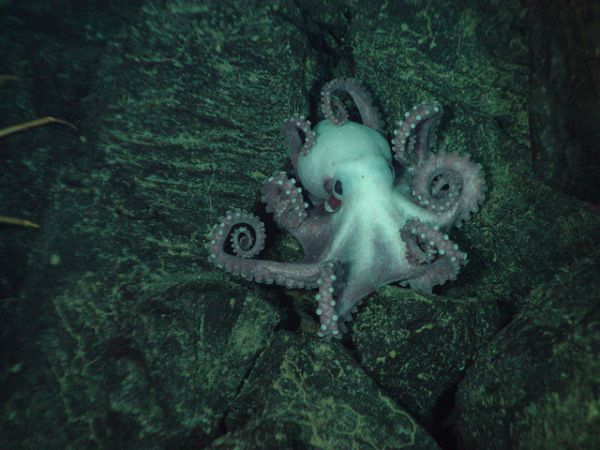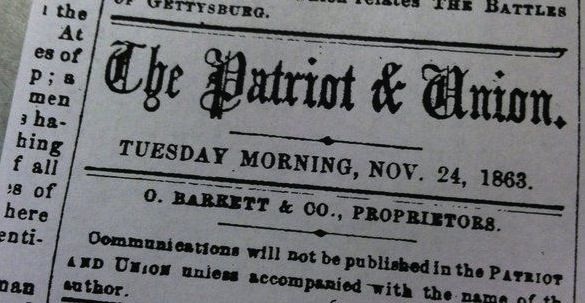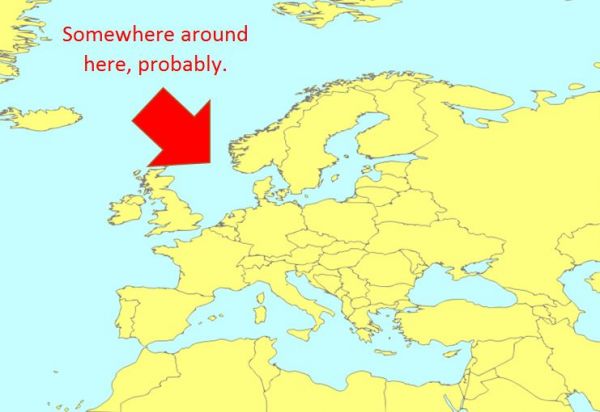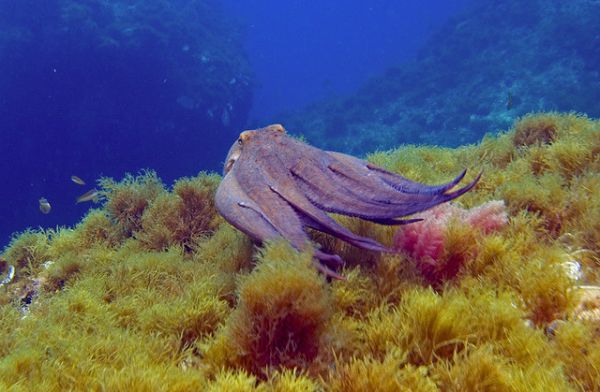Chameleons are over. When it comes to unlocking the secrets of camouflage, scientists are turning to the octopus.

At
the age of 21, snorkeling the clear, blue waters off Panama’s coast,
Roger Hanlon caught his first glimpse of it. As he scanned for vibrant
sea life, his tall frame cast a shadow on an octopus below. Sensing
danger, the creature blasted water at Hanlon before dashing off, its
skin changing colors as it moved. First terrified, then intrigued,
Hanlon chased the 1-pound mollusk for the next 20 minutes. “I just
marveled at its changeable camouflage,” he says. “It moved along, fully
exposed but really hard to see.”
Since then, Hanlon has spent
more than 30 years tracking and filming thousands of octopuses, squid,
and cuttlefish—collectively known as cephalopods—as they change the
pattern, color, and even texture of their skin in waters around the
globe. A senior researcher at the Marine Biological Laboratory in Woods
Hole, Mass., Hanlon knows cephalopods’ tricks better than anyone else
in the world. And now, he’s on the cusp of unlocking the secret of
their chameleon-like talents.
Armed
with a $6 million grant from the U.S. Office of Naval Research, Hanlon
and a team of engineers are building technology that will duplicate
the cephalopods’ spectacular abilities. What could humans do with such
talent? Imagine pattern-shifting clothes or cars that regulate their
temperature by changing color. Thanks to Hanlon’s work, that’s just
around the corner.
The New Chameleons
As disappearing acts
go, cephalopods are unparalleled. Instead of settling for one mode of
camouflage, they’ve mastered just about all of them. This is in part
because they live in the planet’s most visually diverse
environments—coral reefs and kelp forests—where patterns of light and
color vary more than even in tropical rainforests. But Hanlon suspects
that their abilities evolved not because they have so much to hide
against but because there’s so much to hide from.
“Cephalopods,
being soft-bodied and nutritious, occupy that point in the food web
that’s right in the middle,” says Hanlon. The creatures find themselves
on the menu of virtually every ocean predator: birds, fish, dolphins,
and plenty of others. And each of these predators has different visual
powers. Some see ultraviolet light. Others detect polarized light.
Still others have flawless nighttime vision. Cephalopods effectively
have to hide from the most sophisticated eyes in the world. “We’re not
looking at something humdrum that works against one or two predators in
one or two habitats,” says Hanlon. Instead, cephalopods are wielders
of über-camouflage: an omni-disguise that’s evolved to fool every
possible prying eye.

Speed
also matters. In just over two seconds, an octopus can completely
transform from the stony, rugged hues of a rock to a smooth, ghostly
white. But how does it access such a wide palette? The trick is in the
skin: An octopus can expand and contract sacs of red and yellow
pigments called chromatophores, which are dotted across its body but
have uninterrupted nerve connections to its brain. Upon receiving a
signal from those nerves, radial muscles pull outward on a sac,
stretching from an inconspicuous speck to a flat, colorful disc.
Meanwhile, underlying cells called iridophores have the ability to
reflect cooler blues and greens from ambient light. Between these
layers, the animals have the entire spectrum covered.
But
camouflage for a cephalopod is about more than just a color scheme—the
creatures can change shape too. Cuttlefish splay and ruche their arms,
protruding small studs from their skin, until they resemble floating
algae. Some octopuses transform themselves into rolling rocks or
coconuts by walking on two arms while wrapping the others around
themselves. And the most talented charlatan of them all, the mimic
octopus, seems to imitate an entire toxic menagerie. Pulling its arms
back into a flat leaf, it suddenly resembles a flounder. By hiding six
arms and its head in a burrow, it passes for a sea snake.

The
cephalopods are so good at hiding that Hanlon’s first challenge is
finding them. Throughout the years, he’s perfected the art. He tracks
some species by looking for the graveyards of their prey. “Octopuses
are litterbugs,” he says. “They’ll gather crabs and clams and leave the
shells around.” Once he’s marked a den, Hanlon will pull an early
shift, staking out the territory until the owner comes back. “It’s very
labor-intensive. I’ve gone through a lot of volunteer divers who spend
their morning watching a stupid rock.”
Yet for Hanlon, the work
is gratifying. He knows cephalopods could be the key to understanding
camouflage in all species. And the creatures themselves still dazzle
him. “They’re charismatic, interesting, and colorful, and they do
things we don’t expect. That’s fun science.”
Finding a Pattern
 A cuttlefish called the Pajama Squid.
A cuttlefish called the Pajama Squid.
Back
in the lab, Hanlon and his team have placed cuttlefish on
checkerboards, sand beds, and other surfaces of different patterns and
colors, conducting plenty of analysis along the way. But of all the
cephalopods’ abilities, Hanlon thinks that replicating background is the
most important. While many visual predators have poor color vision,
almost all of them are good at detecting mismatched patterns.
And
for all the astonishingly varied backgrounds that cephalopods can
mimic, Hanlon believes that their disguises come in just a few basic
types. In 1998, he accumulated hundreds of cuttlefish photos and started
sorting them into piles based on pattern. “Much to my surprise, I came
up with just a few piles,” he says. More than a decade, thousands of
photos, and several quantitative measurements later, “the same three
pattern templates hold,” he says. In uniform mode, the animal’s entire
body takes on the same uniform brightness, like a sandy floor. In
mottled mode, the body displays small repetitive patches of light and
dark, like a gravel bed. And in disruptive mode, it has bigger patches
that sharply contrast with each other, presented in different scales,
shapes, and orientations. This variation helps to break up the animal’s
recognizable outline. Of course, there are plenty of minor differences,
but it’s the low total number of patterns that intrigues him. “I don’t
care if it’s two or 10, but I’m sure it’s not 55 or 1,000. That’s
already a counterintuitive notion.”
 A cuttlefish displaying a disruptive pattern.
A cuttlefish displaying a disruptive pattern.
Hanlon’s
three-pattern hypothesis also explains how cephalopods can disappear
from view within tenths of a second without needing “a brain the size
of a Volkswagen,” since the animals can simply rely on one rule for
each pattern type. For example, Hanlon’s team has shown that a
cuttlefish will don its disruptive suit if it sees a light patch that’s
sharply contrasted to the darkness around it. Rather than parsing
through all the visual information surrounding it, the cuttlefish susses
out a few key clues to determine the dress code.
But perhaps the
strangest thing about their ability is that, while cephalopods can
mimic the entire spectrum of colors, they themselves are color-blind.
In 2008, Hanlon, along with fellow researchers Lydia Mathger and Steven
Roberts, found a big clue: light-sensitive pigments called opsins
dotted all over the creatures’ skin. Opsins are typically found in eyes
and are essential for vision. The discovery raises the tantalizing
possibility that these animals could sense light in a novel way. “Maybe
there’s sensing going on in the skin, independently of the central
nervous system,” says Hanlon.

As
Hanlon probes these skin pigments further, his collaborators will take
the biological principles and give them an engineering spin. Their
plan is to develop materials that can sense light and change color with
the same speed and efficiency as a living cephalopod—by using
distributed light sensors that can coordinate brightness and color
without needing a central “brain,” or processing unit. Understanding how
the living animals do it will be critical. “The engineers are
invariably astounded by the weirdness of it all, but once they get some
numbers, they’re impressed by how efficient [the ability] is,” Hanlon
says.
The potential applications are as diverse as they are
exciting. “Think about townships with water towers or industrial plants
with chemicals in holding tanks,” says Hanlon. “When they heat up or
become too cold, they become a problem.” A light-sensitive coating that
could change color to control how much heat it absorbs would solve
that problem. Our favorite gizmos could benefit too. A squid’s skin is
just as vibrant and dynamic as an iPhone but runs on far less energy.
“If we work out how biological systems handle light and add that to our
technology,” says Hanlon, “the efficiency’s going to go right up.”









 A
new report from the Government Accountability Office (GAO) addresses
one the programs the TSA uses in airport security checks, called
Screening of Passengers by Observation Techniques (SPOT). The program
employees 3,000 "behavior detection officers" at 176 airports. They are
trained to look for 94 signs of stress in passengers waiting to go
through security checks. Display a certain number of them, and you'll be
pulled out for further screening and questioning. The SPOT program went
into effect in 2007. How's it working out?
A
new report from the Government Accountability Office (GAO) addresses
one the programs the TSA uses in airport security checks, called
Screening of Passengers by Observation Techniques (SPOT). The program
employees 3,000 "behavior detection officers" at 176 airports. They are
trained to look for 94 signs of stress in passengers waiting to go
through security checks. Display a certain number of them, and you'll be
pulled out for further screening and questioning. The SPOT program went
into effect in 2007. How's it working out?




 In
1944-45, 12 inmates at Eastern State Penitentiary in Pennsylvania dug a
tunnel with spoons to make their escape. Bank robber Willie Sutton took
credit for the scheme, although burglar Clarence “Kliney” Klinedinst
was the one with the trade skills to get it done. The caper was
ingenious, not only for its engineering, but also for the fact that no
one snitched and the guards did not find it.
In
1944-45, 12 inmates at Eastern State Penitentiary in Pennsylvania dug a
tunnel with spoons to make their escape. Bank robber Willie Sutton took
credit for the scheme, although burglar Clarence “Kliney” Klinedinst
was the one with the trade skills to get it done. The caper was
ingenious, not only for its engineering, but also for the fact that no
one snitched and the guards did not find it.


 Quantum 'world record' smashed
Quantum 'world record' smashed




 Scientists
who study the origins of cats have a puzzle to solve: genetic studies
indicate that the big cats (lions, tigers, jaguars, and leopards) split
off from other cat species about 10.8 million years ago and the oldest
common ancestor to today's big cats lived in Asia over 6 million years
ago, while paleontologists have fossils going back only 3.8 million
years, and they were from Africa. But in 2010, American Museum of
Natural History paleontologist Jack Tseng found a collection of cat
bones in Tibet that were hard to place. Three years of study later,
Tseng and his team have announced a new cat species, Panthera blytheae, from fossils that range from 4 to 6 million years old. The discovery rearranged the cat family tree.
Scientists
who study the origins of cats have a puzzle to solve: genetic studies
indicate that the big cats (lions, tigers, jaguars, and leopards) split
off from other cat species about 10.8 million years ago and the oldest
common ancestor to today's big cats lived in Asia over 6 million years
ago, while paleontologists have fossils going back only 3.8 million
years, and they were from Africa. But in 2010, American Museum of
Natural History paleontologist Jack Tseng found a collection of cat
bones in Tibet that were hard to place. Three years of study later,
Tseng and his team have announced a new cat species, Panthera blytheae, from fossils that range from 4 to 6 million years old. The discovery rearranged the cat family tree.






